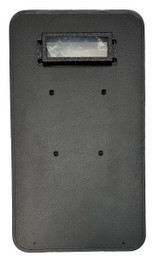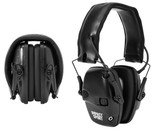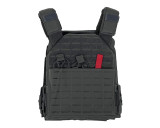How to Choose Between Ceramic vs. Steel Body Armor: A Comprehensive Guide
In high-risk environments, personal protection is crucial, and body armor plays a vital role in ensuring safety. Among the most debated choices are ceramic and steel body armor. Each type offers distinct advantages and disadvantages, making it essential to understand their differences to make an informed decision.
This article delves into the nuances of ceramic and steel body armor, highlighting their protection levels, practical applications, and expert advice. By the end, you’ll be well-equipped to choose the body armor that suits your specific needs.
Understanding Protection Levels
Body armor is classified by its ability to stop specific types of projectiles, following standards set by the National Institute of Justice (NIJ). These levels define the threats each armor type can handle:
NIJ Protection Levels
- Level IIIA:
- Protection: Stops handgun rounds, including .357 SIG and .44 Magnum.
- Applications: Ideal for civilian protection and law enforcement.
- Level III:
- Protection: Stops rifle rounds, such as 7.62mm NATO FMJ.
- Applications: Tactical environments, military use, and high-risk areas.
- Level IV:
- Protection: Can stop armor-piercing rifle rounds.
- Applications: Extreme combat zones and military operations.
Ceramic Body Armor: Strengths and Weaknesses
Ceramic plates are among the most advanced in modern body armor. Here’s what makes them stand out:
Advantages
- Lightweight: Ceramic plates are significantly lighter than steel, reducing fatigue during prolonged use.
- High-Level Protection: Effectively stops high-velocity rounds, including armor-piercing ammunition (Level IV).
- Multi-Hit Capability: Designed to shatter upon impact, dispersing energy and stopping subsequent rounds.
- Comfort: Offers better ergonomics for prolonged wear, especially in dynamic combat situations.
Disadvantages
- Brittleness: Ceramic plates can crack when dropped or subjected to harsh handling.
- Higher Cost: Advanced manufacturing processes make them more expensive than steel.
- Limited Lifespan: Generally, ceramic armor has a 5-7 year service life.
Best Situations for Ceramic Armor
- Military Operations: Where weight and mobility are critical.
- High-Threat Environments: Combat zones involving high-caliber or armor-piercing rounds.
- Urban Tactical Missions: Situations requiring quick movement and agility.
Steel Body Armor: Strengths and Weaknesses
Steel plates have been the backbone of ballistic protection for decades. Their durability and cost-effectiveness make them a popular choice.
Advantages
- Durability: Steel plates are virtually indestructible, even after repeated impacts.
- Cost-Effective: More affordable than ceramic, making them accessible for broader use.
- Multi-Hit Capability: Can stop multiple rounds without losing structural integrity.
- Long Lifespan: Steel armor can last indefinitely with proper care.
Disadvantages
- Heavy: Steel is significantly heavier than ceramic, increasing physical strain.
- Spalling Risk: Upon impact, steel can create secondary projectiles, potentially causing injury.
- Reduced Comfort: Less ergonomic and can be cumbersome during extended wear.
Best Situations for Steel Armor
- Static Defense: Guard posts or vehicle-mounted armor where mobility is less critical.
- Budget-Conscious Applications: Law enforcement or civilians seeking affordable protection.
- High-Durability Requirements: Environments where armor may face rough handling or frequent impacts.
Ceramic vs. Steel Body Armor: Comparison Table
| Feature | Ceramic Body Armor | Steel Body Armor |
| Weight | Lightweight, reducing fatigue | Heavy, adds physical strain |
| Protection Level | High (effective against armor-piercing) | High (effective against standard rifle rounds) |
| Durability | Prone to cracking under stress | Extremely durable, long-lasting |
| Cost | More expensive | More affordable |
| Spalling | No spalling | Spalling risk unless coated |
| Comfort | Ergonomic, suitable for long wear | Less comfortable, rigid fit |
| Lifespan | 5-7 years | Indefinite with proper care |
Key Considerations When Choosing Body Armor
Assess Your Threat Level
Determine the type of threat you’re most likely to face. Handgun threats (Level IIIA) differ significantly from rifle or armor-piercing rounds (Level III/IV).
Understand Your Mobility Needs
If mobility is crucial, opt for ceramic plates. If you’re in a static position or vehicle, steel may suffice despite its weight.
Evaluate Your Budget
While ceramic offers superior performance, it comes at a higher cost. Steel is a budget-friendly alternative but may compromise comfort and mobility.
Check for Spall Coating
If you choose steel armor, ensure it includes a spall liner to prevent injuries from secondary projectiles.
Lifespan and Maintenance
Ceramic plates have a finite lifespan and require careful handling. Steel plates last longer but may rust without proper care.
Expert Advice
According to Mark Thompson, a former Special Forces operative and tactical gear consultant:
"The choice between ceramic and steel body armor should align with your mission. If agility and prolonged wear are priorities, ceramic is your best bet. For static defense or budget constraints, steel remains a reliable option. Always prioritize certified gear from trusted manufacturers."
Frequently Asked Questions
How do I know which protection level I need?
Assess your environment. For civilian or law enforcement, Level IIIA often suffices. Military and high-risk zones require Level III or IV.
Is ceramic armor worth the extra cost?
Yes, if weight and mobility are crucial. Its lightweight nature reduces fatigue, making it ideal for dynamic operations.
What is spalling, and why is it a concern?
Spalling occurs when a steel plate deflects a bullet, creating secondary fragments. Spall liners can mitigate this risk.
Can steel armor stop armor-piercing rounds?
Standard steel armor cannot stop armor-piercing rounds unless rated Level IV. Ceramic armor is better suited for this threat.
Where can I buy reliable body armor?
Visit BattleSteel.com for high-quality, certified body armor options tailored to various needs.
Conclusion
Choosing between ceramic and steel body armor depends on your specific requirements, including threat level, mobility, and budget. Understanding the strengths and weaknesses of each type ensures you’re prepared for any scenario. Explore premium body armor options today at BattleSteel.com and protect yourself with confidence.
Recent Posts
-
Understanding Ballistic Shield Ratings and Their Applications
The Trusted Name in Tactical Defense - BattleSteel® When it comes to protecting those who protect us …2025-04-19 -
The Importance of Hearing Protection in Tactical Environments
The Legacy of BattleSteel® BattleSteel® is a trusted name in the world of tactical defense equipment …2025-04-14 -
How to Properly Fit and Wear a Plate Carrier
About BattleSteel and Their Mission BattleSteel is a trusted name in the tactical gear industry, ren …2025-04-11




